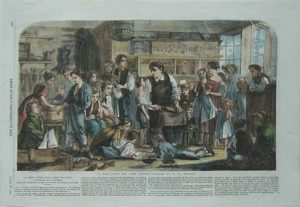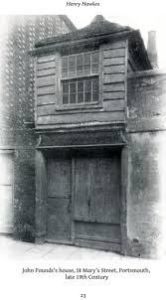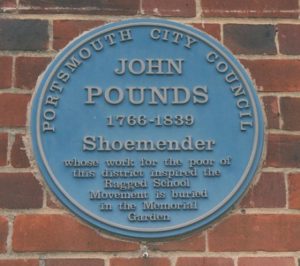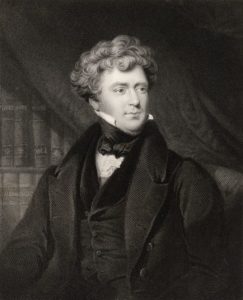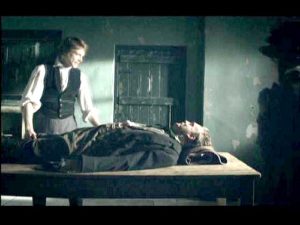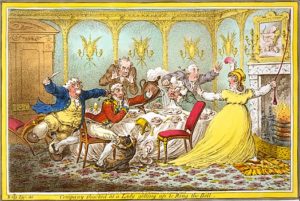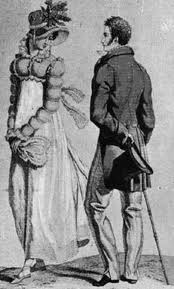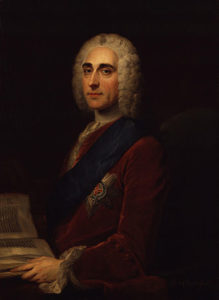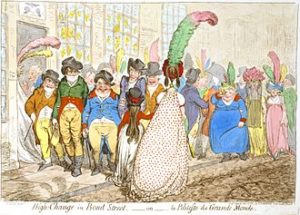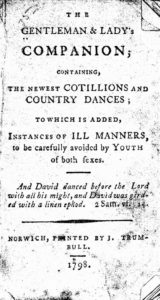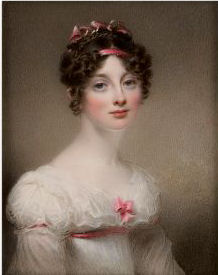 Let’s face it, ladies, even if your new dress is up to the very latest fashion standard in style, color, and fabric, if your accessories are not equally splendid, someone’s bound to notice. And you know what that means. If they notice, they’re going to gossip. We mustn’t have that!
Let’s face it, ladies, even if your new dress is up to the very latest fashion standard in style, color, and fabric, if your accessories are not equally splendid, someone’s bound to notice. And you know what that means. If they notice, they’re going to gossip. We mustn’t have that!
Here then, are a few ideas about accessories to help you (or your female characters) stave off that terrible fate. Instead of the travel piece I had planned for this month, I am going to share some of the lovely items I was fortunate to see last week in an exhibit at the Concord Museum (Concord, MA) running through August. It was entitled “Fresh Goods: Shopping for Clothing in a New England Town, 1750-1900.” The first words were taken from a November 1816 Concord newspaper ad offering fabrics such as “figured flannels, crimson bombazettes, and white and black cambricks”.
While not a huge exhibit (small museum) and rather broad-ranging in time, the displays included some positively lovely pieces, and we were allowed to take pictures. Some items are American-made (although in the early 1800’s many goods were still imported), but at the equivalent time they still followed the fashions we are used to seeing in Regency England.
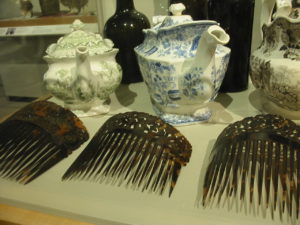 Let’s begin with hair combs. Not the kind for combing out your hair after you’ve washed it, the kind made of tortoiseshell and carved in intricate designs, to ornament your hair on a special evening or to impress a certain special someone. They had several beautiful examples in the exhibit, and I was reminded that such hair combs could be a lovely gift if your characters need one.
Let’s begin with hair combs. Not the kind for combing out your hair after you’ve washed it, the kind made of tortoiseshell and carved in intricate designs, to ornament your hair on a special evening or to impress a certain special someone. They had several beautiful examples in the exhibit, and I was reminded that such hair combs could be a lovely gift if your characters need one.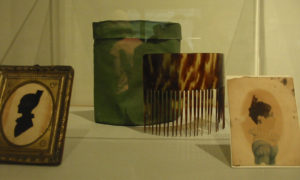 The stylishness of wearing them is well-documented in portraits and silhouettes of the period –you wouldn’t want to perpetuate your image wearing anything unfashionable! (The comb and box in the center belonged to Henry David Thoreau’s aunt, Maria, and is dated 1813. The small portrait at right, of Mercy Davis, is dated 1818.)
The stylishness of wearing them is well-documented in portraits and silhouettes of the period –you wouldn’t want to perpetuate your image wearing anything unfashionable! (The comb and box in the center belonged to Henry David Thoreau’s aunt, Maria, and is dated 1813. The small portrait at right, of Mercy Davis, is dated 1818.)
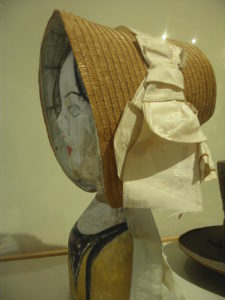 Then we have ribbons. Ribbons for hair, of course, (see portrait at top, not from the exhibit) and especially ribbons for bonnets. Another possibility for gift-giving, and less costly than a comb. Distinctive and handsome ribbon was one way to make sure your new bonnet wouldn’t look too much like someone else’s, heaven forbid!
Then we have ribbons. Ribbons for hair, of course, (see portrait at top, not from the exhibit) and especially ribbons for bonnets. Another possibility for gift-giving, and less costly than a comb. Distinctive and handsome ribbon was one way to make sure your new bonnet wouldn’t look too much like someone else’s, heaven forbid! 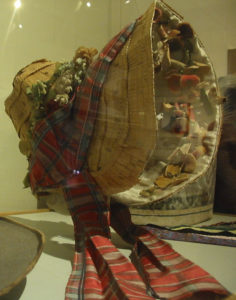
I think you can see that the bonnets pictured would be fairly generic without the lovely wide ribbons that make such a fashion statement.
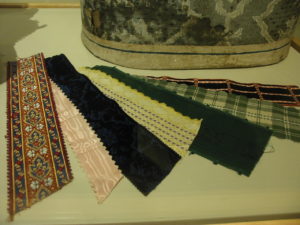 The exhibit included some samples of ribbons –moiré taffeta, grosgrain, of course, and the one on the left which looked suspiciously like a modern machine-woven trim I might buy for decorating a costume! But it represents yet another type to consider.
The exhibit included some samples of ribbons –moiré taffeta, grosgrain, of course, and the one on the left which looked suspiciously like a modern machine-woven trim I might buy for decorating a costume! But it represents yet another type to consider.
Even if your hair is dressed perfectly and ornamented with a beautiful comb, and your ribbons are gorgeous and unlike anyone else’s, there’s still the matter of your gloves, your fan, your reticule. Are they color-coordinated to go with your dress or your pelisse? Is your fan the latest style –with feathers, or without? This beautiful beaded reticule 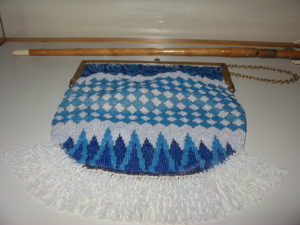 in the exhibit was paired with a pair of blue kid gloves dyed to match the shade of this fan –ivory sticks, blue silk leaves, and originally with blue feather tufts at the top ends!
in the exhibit was paired with a pair of blue kid gloves dyed to match the shade of this fan –ivory sticks, blue silk leaves, and originally with blue feather tufts at the top ends! 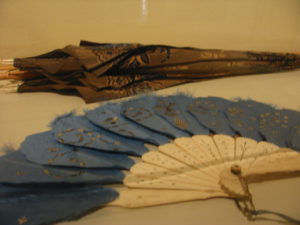
As writers (and readers), we know all of these delicious bits are fodder for story-telling. So here’s a question just for fun: for writers, how have you made use of fashion accessories, or an accessory, in a scene you’ve written? For readers, can you remember a scene you’ve read where a fashion accessory played a part in what happened? (Let’s say other than fans, for we all know how easily those can play a role!) Please share with us in the comments section below! Thanks for visiting. 🙂

